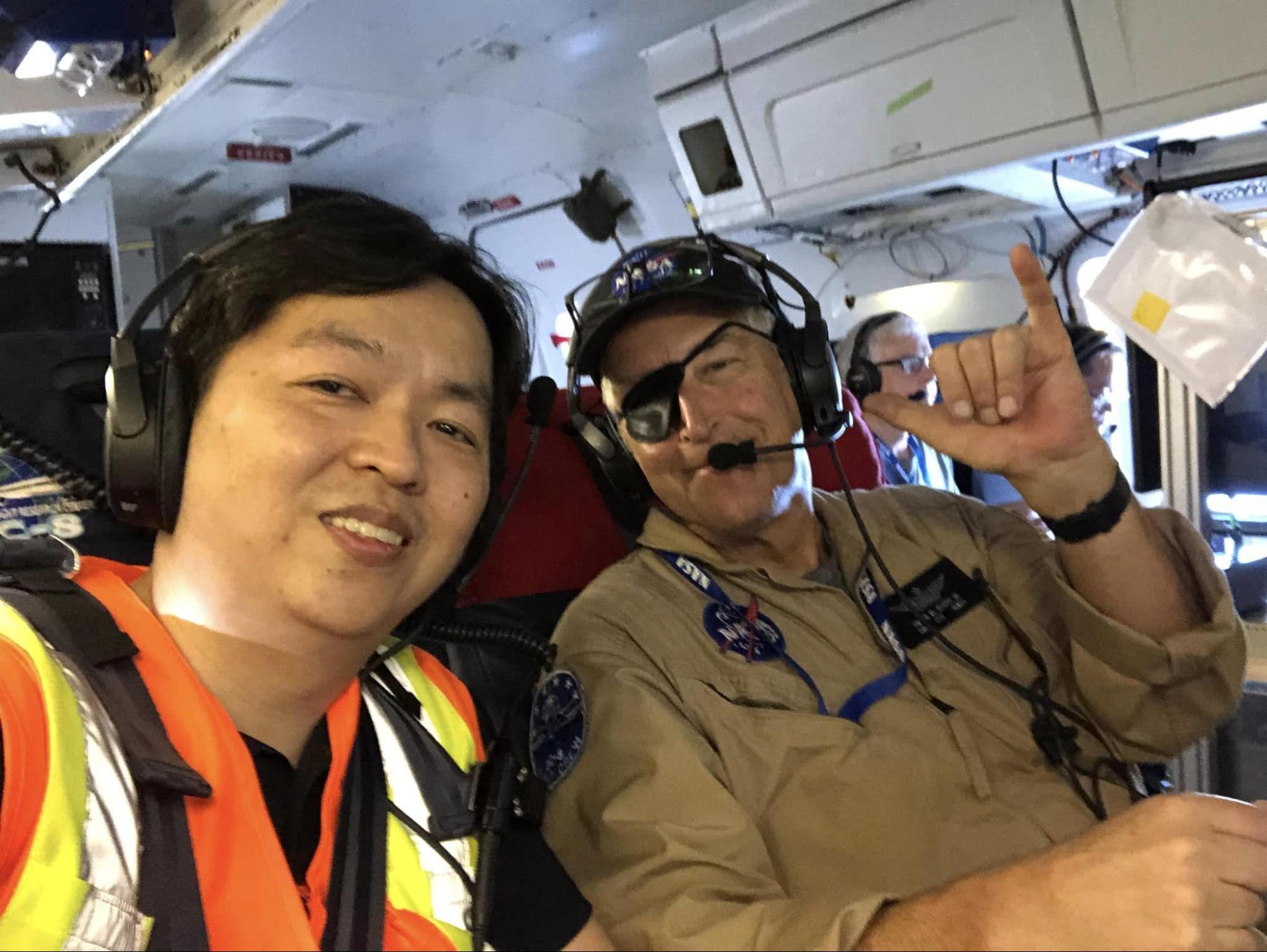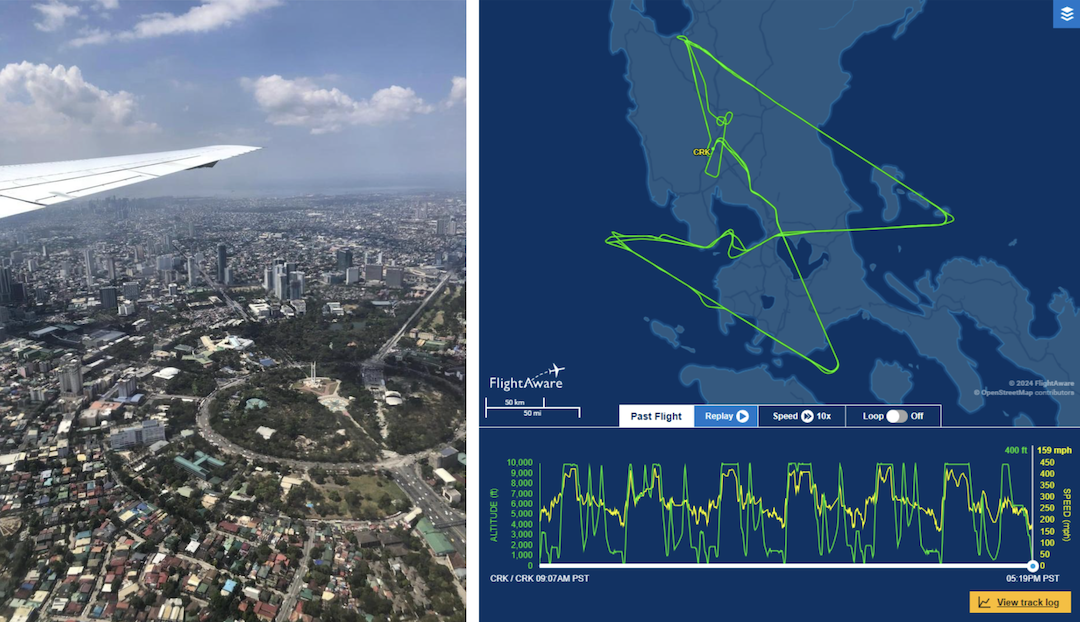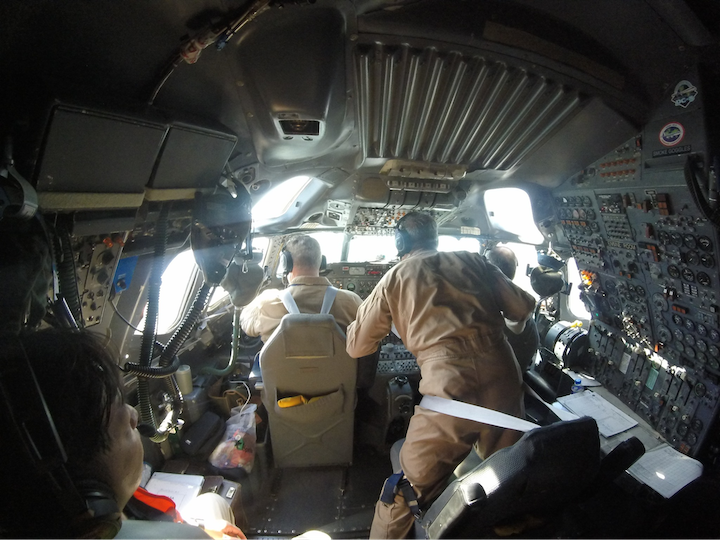UP Atmospheric Physicist Takes to the Skies with NASA: Monitoring Air Quality on NASA817
Published: February 15, 2024
By: Maria Alexandra Marmol

Dr. Gerry Bagtasa of the UP Diliman College of Science – Institute of Environmental Science and Meteorology (UPD – CS IESM) took flight with NASA last Sunday, February 11, 2024, as part of an air pollution measurement campaign called ASIA-AQ (Airborne and Satellite Investigation of Asian Air Quality).
NASA817—more specifically the NASA DC-8 plane—is an airborne science laboratory based in NASA’s Armstrong Flight Research Center in Palmdale, California. It is flown to other parts of the world to gather data to support the research and experiments undertaken by the global scientific community.
The objective of this particular series of flights with the Filipino team, consisting of DENR-EMB, the Manila Observatory, and Dr. Bagtasa, was to assess the air quality of multiple Asian cities by utilizing satellite remote sensors and air quality models. With the equipment of the modified Douglas DC-8 jetliner, they were able to observe the atmosphere and detect various pollutants such as particulate matter, ozone, carbon dioxide, and methane, which are not usually locally measured above the ground.
“The purpose is to improve our understanding of the dynamics of air pollution in the region,” Dr. Bagtasa said.
With the Filipino team, they were able to help plan the flights by providing air quality and weather forecasts. They also provided insights into local weather patterns, drawing from Dr. Bagtasa and the Manila Observatory’s recent publications and expertise in contextualizing the data being collected.

The Experience
NASA817 flew four times to the Philippines on February 6, 7, 11, and 13, and for each flight, there were a few available seats for observers. Dr. Bagtasa and scientists of the Manila Observatory and DENR joined different flights, and of the 8-hour experience, the plane would constantly change altitudes from 1000 ft to 10,000 ft, then back again, to gather more data at different levels of elevation throughout the region.
“In almost any airplane ride, we encounter some brief bumpy to very bumpy, turbulent moments, right? Imagine that happening for 8 hours—the flight was brutal. I guess mainly due to the low-altitude nature of the flight,” Dr. Bagtasa commented. “And to make it more exciting, I experienced the hardest of hard turns and rolls in an airplane during the flight.”
With humor, he also went on to say, “Most of the researchers on the plane wear some transdermal patch behind the ear for motion sickness. I didn’t, and I was in the backmost seat. After around 5 – 6 hours into the flight, considering that I’ve been on probably >100 flights in my lifetime, it was my first time to throw up in a plane ride.”

Despite the bumpy ride, the flights are crucial to the campaign, ASIA-AQ. NASA’s project presents an avenue for international cooperation, partnering with local scientists, researchers, and experts to implement a unified strategy across various Asian nations in addressing not only regional air quality concerns but also gaining a broader understanding of the interpretation of satellite data and air quality modeling.
Dr. Bagtasa and the Manila Observatory partnered with the DENR to join the flights to provide their local knowledge on the air pollution of the country. While the data gathered on these trips are still being processed and have yet to be published, NASA817 will now move on to South Korea, taking measurements in Taiwan on the way. After Seoul, it will then fly to Malaysia and Thailand. After the ASIA-AQ campaign, the NASA DC8 will be retired.
For interview requests and other concerns, please contact media@science.upd.edu.ph.
References:
ASIA-AQ. (n.d.). https://espo.nasa.gov/asia-aq
NASA. (2023, September 29). DC-8 Airborne Science Laboratory – NASA. NASA. https://www.nasa.gov/centers-and-facilities/armstrong/dc-8-aircraft/
